If you plan to start your astrophotography hobby, one of the first questions that probably comes to your mind is what kind of affordable telescope you should buy. There are many types of telescopes which can be quite overwhelming.
The short answer to this question is that – in my opinion – you should buy either an ED doublet or triplet refractor. The main reasons are that (a) such refractors produce high quality images of deep sky objects; (b) refractors are relatively affordable; (c) refractors are easy to setup and use, and (d) refractors do not require any maintenance. As there are many different types of telescopes available, I will break down this blog into three parts where I discuss what the most important criteria are to look for when buying your first astrophotography telescope; what types of telescopes fit those criteria; and what affordable telescopes are available on the amateur astrophotography market today.
NOTE: I’VE MADE A NEW B/VLOG FOR AFFORDABLE TELESCOPES IN 2021 CLICK HERE TO CHECK IT OUT!
Important criteria when buying your first telescope for astrophotography
I would argue that there are at least four criteria you should look for when buying your first astrophotography telescope. First of all, the telescope should produce a high-quality image of deep-sky objects. Second, your telescope should be affordable. Third, your telescope should be easy to set up and use, and fourth, your telescope should not require any maintenance. Before I start discussing these criteria in more detail, I have to warn you that your telescope is only one piece of the astrophotography puzzle. You will also need other gear such as a good tracking mount and a camera. It will also take time to master all of the astrophotography skills needed to accurately track and capture deep-sky objects. In short, mastering astrophotography is like running a marathon, it’s not a sprint.
1. High quality pictures
The first requirement is that you want a telescope that is able to produce high quality pictures of deep sky objects such as galaxies, star clusters, and/or nebulae. At least two problems may occur when you buy the ‘wrong’ telescope that is unfit for astrophotography. First, a bad quality telescope will suffer from chromatic aberration, also known as “color fringing” or “purple fringing”. This is a common optical problem that occurs when a lens is unable to bring different wavelengths of the light spectrum onto the same “focal plane” – for instance your camera sensor. Put differently, the red, blue and green part of the light spectrum will hit your camera sensor at a slightly different angle, leading to chromatic aberration.
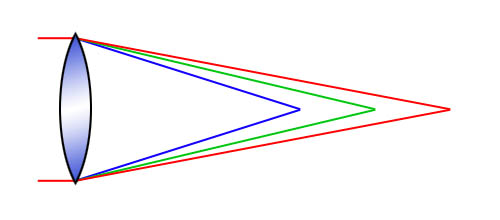
Chromatic aberration will result in colors that do not resemble the actual colors of the deep sky object you want to image. Moreover, it will produce nasty purple halos around your stars, something you want to avoid at all cost! Let’s compare my very first picture of the horsehead nebula taken with a poor telescope that suffers from chromatic aberration (I can’t believe I’m showing you this!) to my latest picture and you understand what I mean :-).
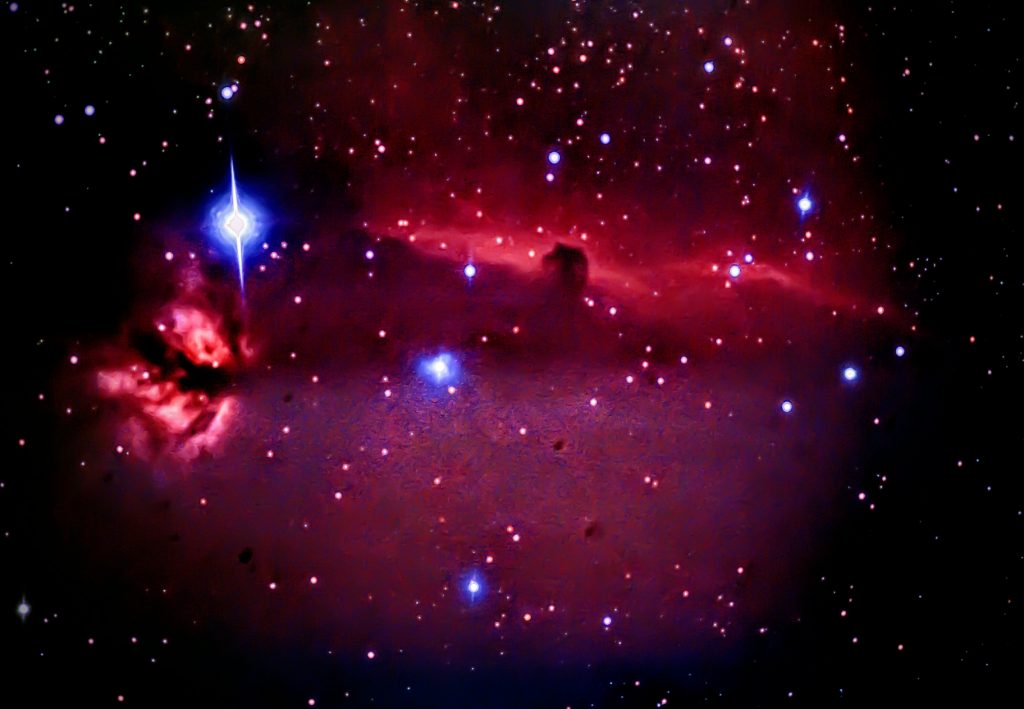

Another problem in astrophotography is called astigmatism, from which many telescopes suffer. To put it in simply, your telescope will produce stars that are nice and round in the center of your picture. However, towards the edges of your picture, stars will become oval. Equipment such as coma and flatfield correctors can be used in combination with your telescope to eliminate astigmatism in your pictures.

2. Affordable telescope
Astrophotography can be an expensive hobby with some steep learning curves ahead. My personal advise is that you should not spend all your precious money on the best astrophotography telescope and gear. What if you don’t have the time or motivation to develop all kinds of skills such as how to setup and polar align your mount, how to auto guide your mount, and how to capture, stack and post process your images? You could end up with an expensive telescope that may be hard to sell. Be advised, I will recommend telescopes that are nowhere near the cheap kind of telescopes you find in a toy store. As you will see, a decent beginner astrophotography telescope will already cost you about $500 to $1000! Of course, affordability depends on your personal financial situation and price may be more or less of an issue for you.
3. Ease of use
When you are just starting your astrophotography hobby, you want to practice as much as you can. For a lot of us, this means allocating some of our precious time to nights that bring us clear skies. It can sometimes take weeks or even months until this happens (in The Netherlands at least). When you do have some clear skies, you want a scope that is immediately ‘ready to go’. I mean, the telescope should not break your back when you carry it outside and put it on your tracking mount. It should also be straightforward to attach a camera and bring the telescope in focus. I often see that – at least for visual use – fellow amateur astronomers recommend a telescope with a large aperture for a low price – mostly dobsonian or newtonian reflectors. As a consequence, lots of people end up with a huge telescope that sits in their basement and is never used. Not because these telescopes are of poor quality, but because it is simply to much of a hassle to carry the telescope outside and put it on a tracking mount. My personal opinion is therefore that it would be better to start your astrophotography hobby with a telescope that has a lower aperture. These telescopes are not so heavy, your can quickly take the telescope outside, put it on your mount, attach a camera, and enjoy capturing deep sky objects without breaking your back.
4. Low (or no!) maintenance
The final requirement I would look for in a beginner astrophotography telescope is that the telescope requires little or no maintenance whatsoever. Let me ask you this. When you start your astrophotography hobby, do you want to spend your precious time ‘under the stars’, learning the ropes of this beautiful – and sometimes frustrating – hobby? Or do you want a telescope that can be out of alignment and requires maintenance? Of course, some of us really like to ‘tinker’ with their telescopes and any kind of maintenance can be learned. But my point is that you probably want to spend your precious time on learning how to image beautiful deep sky objects rather than maintenance.
Refractors and reflectors
So now that we know what kind of criteria to look for in a good beginner astrophotography telescope, let’s talk about some of the main differences between different types of telescopes. Much of it comes down to telescopes that are either refractors or reflectors. Refractors are the telescopes you are used to seeing in cartoons and movies. Light enters the telescope through a lens situated in front of the telescope. The lens(es) then refract(s) that light onto either an eyepiece (for visual observations) or a camera sensor (for astrophotography). The quantity and quality of those lenses vary between refractors. Many stores sell cheap, achromatic refractors. I urge you to stay away from those when engaging in astrophotography. Yes, they are very favorably priced. If you have a strong urge to buy an achromat, I urge you to scroll up and take another look at my first picture of the horsehead nebula, that should cure you. As discussed above, cheap achromat telescopes suffer from chromatic aberration and produce false color images of your deep sky objects and ugly purple halos around your stars. At minimum, you should buy a refractor that is known as an ED doublet. ED stands for extra low dispersion which produces much less chromatic aberration as compared to an achromat telescope that does not have ED glass. If you want an even more accurate picture in terms of colors, you should buy an apochromatic triplet refractor – also called APO in short. These refractors have three lens elements and will produce a highly accurate colored picture of deep sky objects. Most triplet refractors do suffer from astigmatism, meaning that the stars at the edge of your image will look oval rather than nice and round. Flatfield correctors can be bought that can eliminate this effect. Quadruplet refractors have such a corrector in the design of the telescope – but the more elements, the more expensive and heavier the refractor telescope becomes…


A reflector is a mirror-based telescope. Light enters the telescope and is then reflected by a mirror in your telescope. This light is usually first reflected by a so called primary mirror that sits at the base of your telescope, onto a secondary mirror which reflects that light again onto either an eyepiece (for visual use) or a camera sensor (for astrophotography). Reflectors come in many shapes and sizes and they have their own advantages and disadvantages. One advantage is that they generally do not suffer from chromatic aberration. One disadvantage is that the curved mirrors in many reflectors produce coma – oval stars at the edges of your images. A coma corrector can be bought and used in combination with your reflector to correct for this effect. Some of the more expensive reflector designs have parabolic secondary mirrors which counter coma and produce a nice ‘flat’ starfield across your picture (e.g., Richey Cretien telescopes). Another disadvantage is that the primary and secondary mirror need to be perfectly aligned to get a high quality picture of your deep sky object. When they are out of alignment, you will need to perform ‘maintenance’ on your telescope, also called collimation. Collimation basically means ensuring that your eyepiece or camera sensor is aimed at the center of your primary mirror and vice versa. As said, reflector based telescopes come in all shapes and sizes, from newtonian and richey cretien telescopes to smith cassegrain and maksutov types of telescopes.

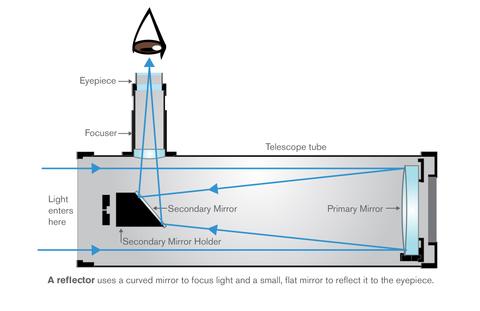
Which affordable beginner telescope should you consider?
In this section I will compare six types of telescopes: the refractor (ED doublet or triplet), the newtonian telescope, the richey cretien telescope, the Rowe Ackermann Smith Astrograph (RASA), the Smith Cassegrain telescope and the maksutov telescope to the four criteria I have mentioned. Here we go.
High quality pictures
The first criterium was that the telescope should enable you to take high quality, chromatic aberration free images of deep sky objects. I would say this cancels out the use of either a smith cassegrain or a maksutov type of reflector. Both types of reflectors have a longer focal length, which makes them excellent telescopes to image small, bright objects in the nightsky, such as our planets and perhaps bright globular clusters. Due to their longer focal length, however, they are ill equipped to capture faint light from nebulae and other fainter objects in the night sky. There are all kinds of accessories to make a smith cassegrain or a maksutov telescope more fit to capture fainter objects as well, such as focal reducers. This being said, I would argue that your first telescope has to be able to capture faint deep sky objects ‘out of the box’, without having to buy additional equipment. So two down, four to go.
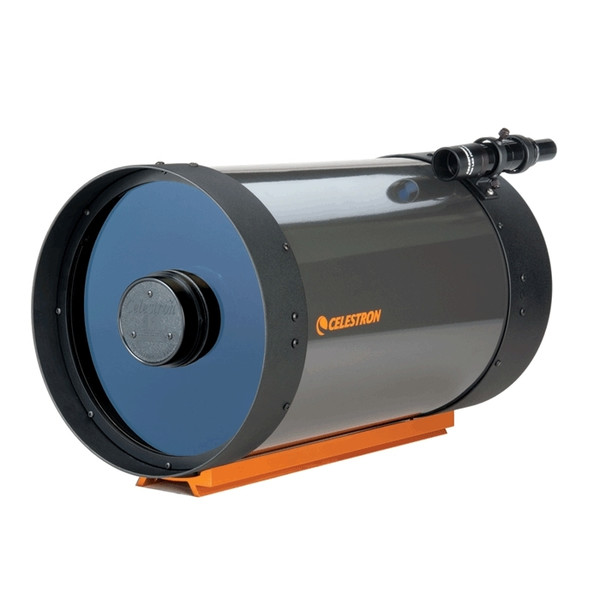

Affordable
The Rowe Ackermann Schmidt Astrograph (RASA in short) is a reflector telescope which is excellent for deepsky imaging. With a large aperture and a low f/ratio (2.0), this is one of the ‘fastest’ telescopes in the world of amateur astrophotography that enables you to capture faint deep sky objects. However, it comes with a pricetag of about $1750 in the USA and over 2000 euros in Europe. I would say that, for a beginner telescope, the price is a little over the top. Also, it has a unique design which takes some getting used to. When you are just starting your astrophotography hobby and don’t want to deplete your bank account, then skip this one. If you’re not bound by any budget, by all means, consider the RASA. Three down, three to go.
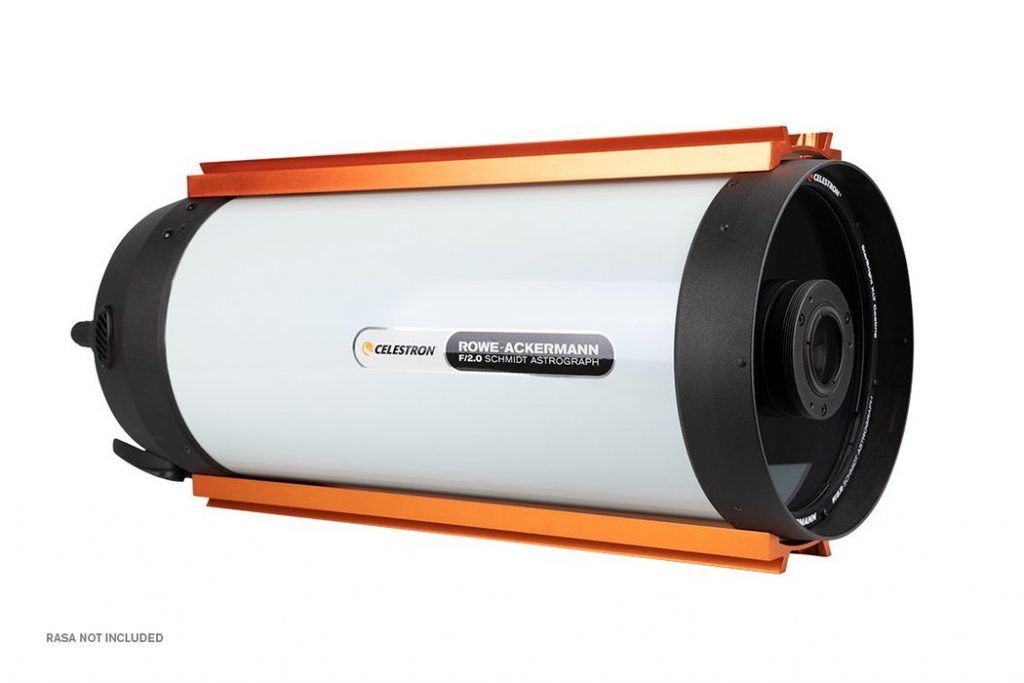

Ease of use
The Richey Cretien telescope is very useful to capture smaller objects in the nightsky such as galaxies and globular clusters that are half a degree or less in apparent diameter. The uniquely designed parabolic mirrors create correct colors and coma free pictures of your deep sky objects. This being said, this telescope type ‘zooms in’ on a small patch of the night sky, and needs an advanced equatorial mount with very accurate guiding capabilities. The RC telescope is more suited as a second or third telescope, but I would not recommend buying one when you just start your astrophotography hobby. So, we are down to the last two finalists.
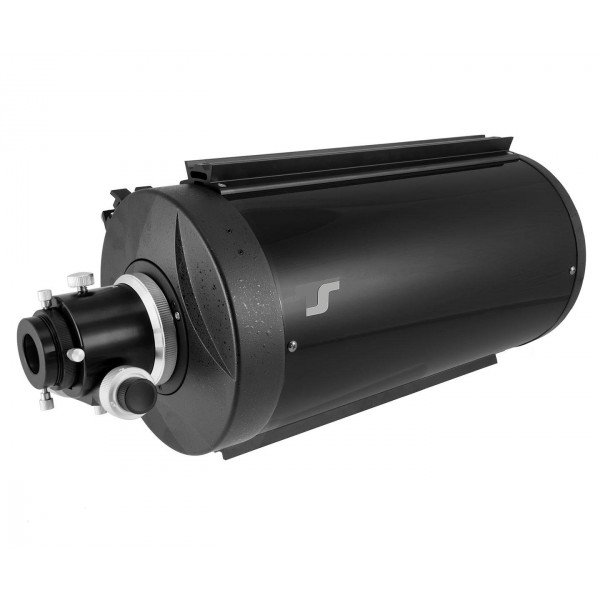
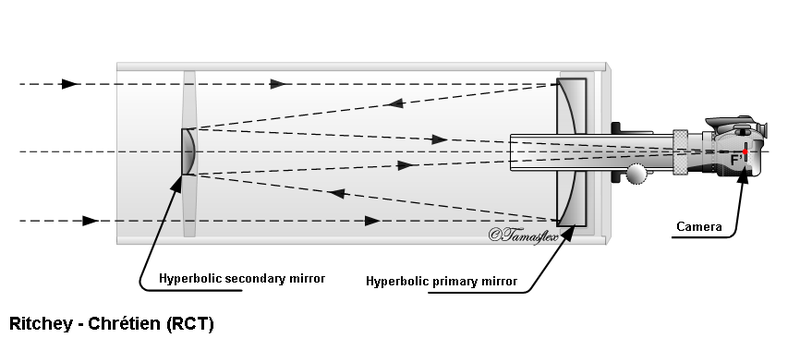
Maintenance
The final battle is between the refractor and the Newtonian reflector, and it is a difficult one. Newtonian reflectors are favorably priced. This being said, they do need some maintenance in the form of collimation. Maybe it comes down to the question whether or not you like to tinker. If you do not mind to spend some of your time and effort to properly align the mirrors of your Newtonian reflector, then this telescope may be a good place to start. Do keep in mind that this telescope suffers from coma – oval stars around the edge of your pictures – for which you need to buy an additional coma corrector. You would also need to buy some collimation tools. Because of the maintenance issue, I would argue that the best telescope to start your astrophotography hobby is either an ED doublet or triplet refractor. Specifically, I would encourage you to start with a refractor with a modest aperture of about 70mm to 100mm (3 to 4 inches). A good triplet refractor will produce high quality pictures of your deep sky objects, it is still relatively affordable (although not cheap). Also, such refractors are relatively light, easy to setup, and do not require any maintenance. These so called ‘wide field’ refractors are perfect to start capturing some of the larger, famous deep sky objects such as the orion nebula, the horsehead nebula, and the andromeda galaxy. Because of the wide(r) field of view, some periodic error in guiding is not fatal. This means that you can start with a beginner level mount such as a Celestron Advanced VX or the Skywatcher HEQ5. The ‘widefield’ triplet refractor is – in my humble opinion – the number one telescope to start your astrophotography hobby.
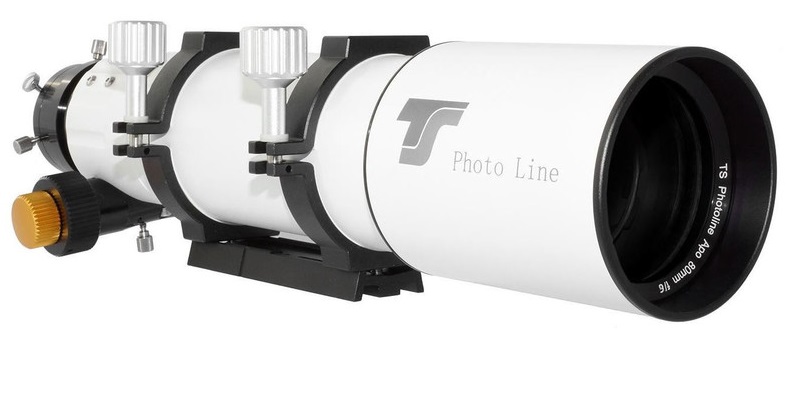
A non-exhaustive list of refractors to start your hobby
In my opinion, the refractor wins the battle for the best beginner astrophotography telescope to start your astrophotography hobby. There are a lots of ED doublet and triplet refractors available on the astrophotography market. Most of them will cost between $600 and $1000 dollars. Below, I will provide a non-exhaustive list of ED doublet and triplet refractors that I would consider if I would start my astrophotography hobby today. I’ve included links to respectable USA and EU based web-shops. Although the refractors are genuinely of good quality, I highly recommend you to do your own research. Talk to owners, go to fora and discuss what kind of telescope suits your particular interests! Clear skies!
ED Doublet Refractors
Explore scientific AR-102mm doublet refractor f/6.5
USA: OPTcorp.com EU: Astroshop.eu
William Optics ZenithStar 81 F/6.9 doublet Refractor
USA: OPTcorp.com EU: Astroshop.eu
TS-Optics ED 102 mm f/7 Refractor Telescope
EU: Astrohop.eu
Triplet refractors
Meade 80 mm Series 6000 f/6 ED APO Triplet Refractor
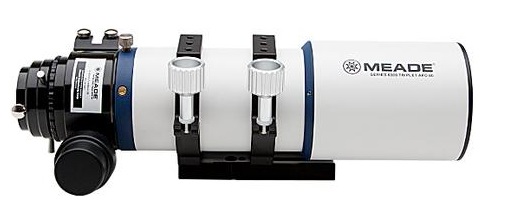
USA: OPTcorp.com EU: Astroshop.eu
Orion 80 mm ED F/6 CF Triplet APO Refractor OTA – 09534

USA: OPTcorp.com EU: Astroshop.eu
EXPLORE SCIENTIFIC 80MM FCD100 F/6 ED APO TRIPLET REFRACTOR
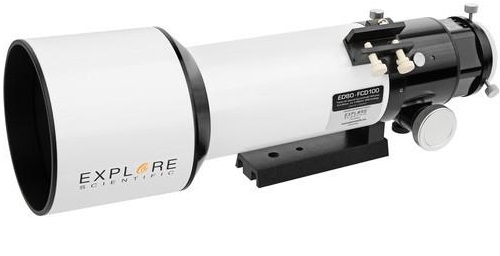
USA: OPTcorp.com EU: Astroshop.eu
TS-Optics PHOTOLINE 80mm f/6 FPL53 Triplet APO – 2.5″ RAP Focuser
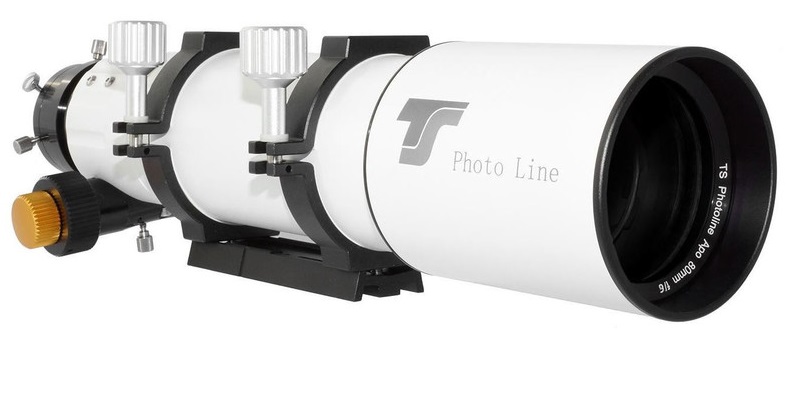
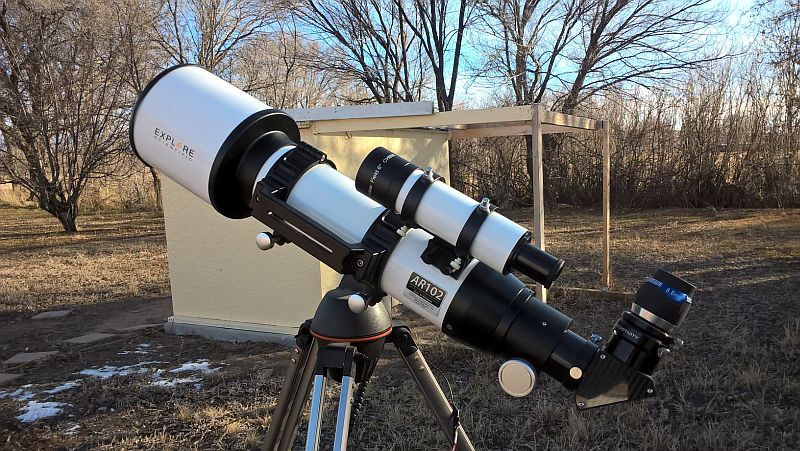

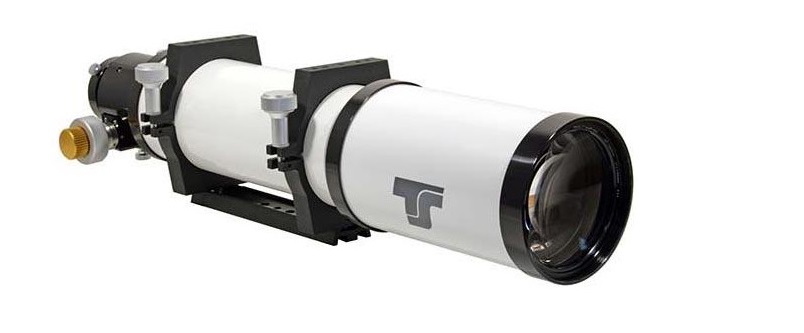
Hello, I’m really interested in astro photography, but being a fresh graduate in Malaysia. I don’t really even have the resources for these recommended telescopes. 800 USD is just a tiny bit less than 3 months of my salary if I were to not use a single cent of it. Is there any other cheaper option i could opt for?
Hi Amin,
Yes, AP can get very expensive. What you could do is buy a DSLR on a second hand market. Make sure you get one with a wide lens (e.g. 18mm or less) and a relatively fast f/ratio (e.g. F/3.5 or lower).
you can mount a second hand DSLR on a static tripod – those should be relatively inexpensive. You can already do great stuff with that such as timelapses and startrails of stars, and making awesome images of the milkyway.
Hope this helps. Clear skies!
Wido
Hi,
Great blog and tutorials. I’m currently buying my first mount after your another blog post here. You’re doing great work with all explanations and details.
One question about this blog. Do you have any opinion on Red/Space Cat AP 51/250? I heard it’s great for first astrophoto telescope.
Clear skies!
Hi Michal,
Thanks! The Red Cat 51/250 is a very good telescope, but specifically geared towards wide field astrophotography.
You can make beautiful pictures of (parts of) our milkyway and other larger nebulae like the one’s in the constellation cygnus.
Just don’t expect any close up pictures of galaxies (with the exception of the Andromeda galaxy). Good luck!
Hellooo, I have a question, are there any cheaper telescopes? The maximum for me is 400 dollars.
Thank you!
Carrot007
Yes, of course. The only thing is that they are not really fit for astrophotography. But they are still nice for some detailed moon, planetary and deep-sky observations. Depends a bit on what you want. This is a shot in the dark, but I myself started out with a telescope which is very similar to this one:https://bit.ly/3eUcrb4. It was really fun to have a goto mount, type in the object you want to see and it moves the telescope to that position. You can watch through an eyepiece or attach a camera with a live view. Cheers, clear skies.
Hi there, maybe this is a nice telescope to start: https://bit.ly/39fHfBP. It has an easy to use computerized goto mount and a nice refractor that is great to start visual astronomy. It’s actually my first telescope I used and I was amazed by the views I got on the moon and the Orion nebula. Best, Wido.
Ok, thanks very much dude. You helped me a lot, really. Thank you very much :DD
Hi,
I would like to try deep-sky astrophotography. Problem is, that it is expensive. Do you think that Nikon D3400 or Nikon D3500 is good for that? I will start photographing without camera lenses, but I will buy some later. If none of these cameras are good, could you help me please? I would like to have a camera around 500 and 600 USD.
Sorry for my grammar mistakes, I am from Europe.
Btw you have very nice photos! Like wow, I am impressed :DD.
Have a nice photographing!
Hi Kirsten,
Thank you and very nice to hear you’re interested in astrophotography. The Nikon D3500 is nice, I see this one comes with a 18-55mm kitlens: https://amzn.to/2DN8qZm. You can get started with a regular DSLR on a static tripod and take some nice widefield pictures of the 🌟 stars, constellations and the milky way! Remember to get a tripod, you’ll be taking long exposure pictures and your camera need to be still. Another option is the canon 4000d: https://amzn.to/2Pv2kzg. Astrophotography software used to be more geared towards canon. Good luck deciding and please share your first astropicture with me:-). Cheers, wido.
Ok, thank you very very much! You really helped me 😀 Maybe I will buy it for Christmas, I would be happy to send you some photo 😀 But like I said, maybe in winter.
Thank you for helping me!
Have a nice time photographing 🙂
K.
No problem, great to hear that my help was useful! Cheers, wido
Hi,
I’ve got some experience photographing using ieq30 mount and 135 Sonnar Lens with cannon. It’s great and now I’m thinking about buying proper scope. I reduced choice to two, both listed by you: TS-Optics PHOTOLINE 80mm f/6 FPL53 Triplet APO – 2.5″ RAP Focuser and William Optics ZenithStar 81 F/6.9 doublet Refractor.
I did my own research and saw that TS can have some problems with quality more then WO. But Photoline is true APO, not dublet. Would you recommend buying Photoline still like in video? Any other thoughts, suggestions?
And maybe you have some flattener/reducer do suggest for photoline?
Thanks in advance and clear skies from Poland!
Hi there,
I don’t own the zenithstar, but given its a doublet it would give you accurate colors for red and blue, but not green. Usually this is not a big issue as a lot of DSO’s are in the blue and red part of the light spectrum. Still, I suspect that the photoline APO triplet refractor would give you some better results. I still use this telescope and am very satisfied with it. I have a TS flattener (1.0, it doesn’t reduce the field of view) to get round stars towards the edge of my field of view as well. Good luck deciding!
Hi,
I have just read the comments here and I see, you helped them a lot :)) Anyways I have almost the same question as Kirsten has, would be a camera Nikon D3500 good for astrophotography? I would connect it to a Ritchey-Chretien telescope.
Clear skies!
Thanks! DSLR’s are good to start out astrophotography but they do have some setbacks, please check out my blog on astrophotography cameras, you can find it here: https://astroforumspace.com/best-camera-to-start-astrophotography-in-2020/
Clear skies.
Hi, I’m looking out for telescopes which can help me observe deep sky objects, planets and also to start astrophotography.
At a local shop I was given the below options
1. BRESSER 130/1000 with EXOS I EQ System
2. EXPLORE SCIENTIFIC 150/750
EQ-3 Reflector Telescope.
To start with are these a option and also the mounts provided with them seems to be basic..can I upgrade the mounts?
Is there any restriction in terms of upgrading the mounts depending on the telescope or the manufacturer?
I’m not really sure about these.
A bit tight on my budget as well..please suggest..
Hi Amrin,
the ES 150/750 is a decent Newtonian to start astrophotography I think. The EQ3 mount is a bit light but you can of course always try and upgrade when necessary (see my blog on beginner mounts :-)).
Also, in time, you probably also want to get a coma corrector to get a flat field image (no starcoma’s around the edges) and a guidescope + camera to accurately track.
Hope this helps, clear skies!
Hi, thanks for the great article.
I’m planning to start astrophotography and I think the best choice for me would be the TS-Optics ED 102 mm f/7 (one of your suggestions). Do you think it is a great telescope to start with or you think that the chromatic aberration would be too noticeable? This telescope would be just great for me since the field of view would be smaller than a 80mm F/6 so I really hope it can produce nice and sharp images of smaller DSO. So my question would be if this telescope would be that much different than a triplet APO in terms of the final image. Also do you think I really need a field flattener? Or some kind of filter to reduce the chromatic aberration (using the telescope with a crop sensored DSLR)?
Thank you
Marco
Hi Marco,
The main difference is that the TS optics 102 is a doublet refractor and I think you are referring to the 80mm f/6 apo photoline which is a 3-glass element refractor (triplet).
The 102mm has a bigger aperture and focal length enabling you to get a higher level of magnification on the target. The APO has higher quality glass if I remember correctly (FPL-53) whereas the
102 has the FPL-51 glass. You won’t notice a huge difference but the 80mm willl provide a complete color aberration-free image whereas you may notice some color fringing (but not much) on the doublet.
I would definitely go for a field flattener, I use the TSFLAT2. Ofcourse, you could start without one and just check if you suffer from elongated stars at the edges of your frame.
Hope this helps!
Good luck and clear skies!
Wido – AstroForum